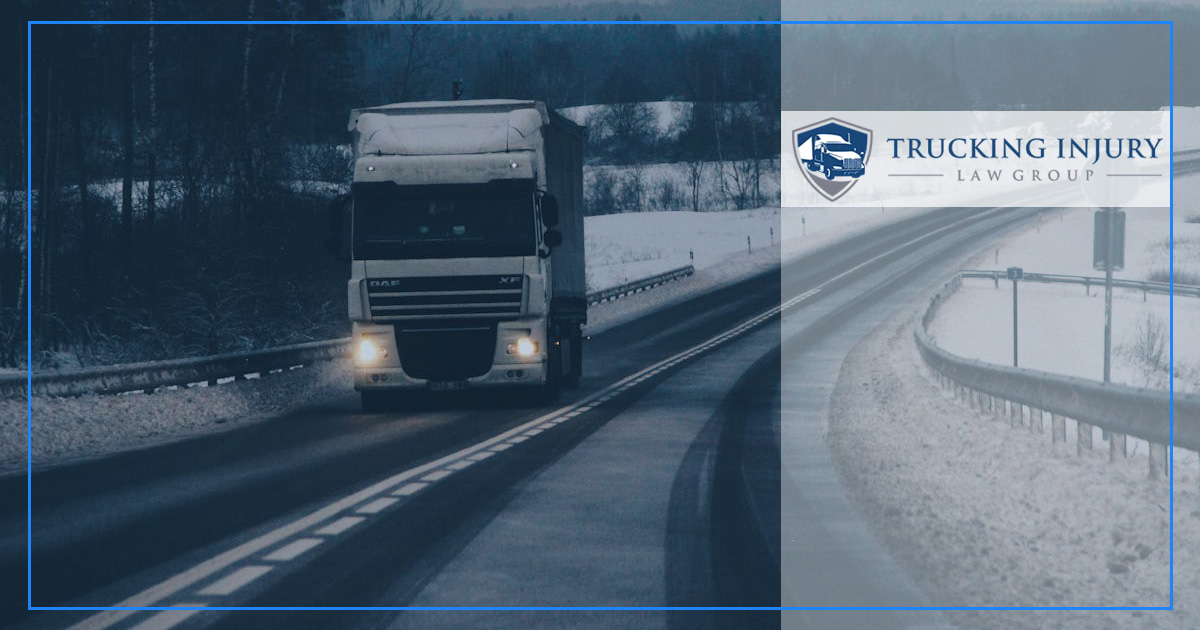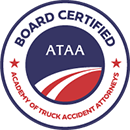Does a Truck Take Longer To Stop During Bad Weather Conditions?

Bad weather significantly impacts road safety, particularly for large trucks. These heavy vehicles already require longer stopping distances even under ideal conditions, and bad weather only makes things worse.
Understanding the answer to the question, “Does a truck take longer to stop during bad weather conditions?” is imperative to safely share the road with these drivers. So, let’s explore how weather affects truck stopping distances. It’s critical for drivers, trucking companies, and other road users to reduce truck accident risks.
How Truck Stopping Distances Work
The primary factors for stopping a vehicle are perception time, reaction time, and total braking distance.
For trucks, the impact of braking distance becomes starker when compared to smaller vehicles. A fully loaded semi-truck can weigh as much as 80,000 pounds, making it significantly more difficult to slow down or stop in an emergency.
In ideal conditions, a truck traveling at 65 miles per hour needs approximately 525 feet to stop, per the Utah Department of Transportation.
This distance includes the time it takes for the driver to perceive a hazard, react, and apply the brakes effectively. Anything that reduces a truck’s traction or adds to response time can extend this distance drastically.
How Bad Weather Impacts Stopping Distances
Poor weather conditions such as rain, snow, fog, and ice can directly affect a truck’s ability to stop safely. Each type of weather introduces unique hazards that make braking more challenging:
Rain and Wet Roads
Rain reduces tire traction, especially during the first moments of a downpour when oil and debris create a slick surface. Wet roads can double or even triple a truck’s stopping distance. If a truck skids or hydroplanes, the driver may lose control entirely, further delaying the ability to stop.
Snow and Ice
Snow and ice present even greater risks, as they can reduce tire traction by up to 80%. Trucks traveling on icy roads may take up to 10 times their normal stopping distance. Black ice, which is a thin, almost invisible frozen layer, is especially dangerous as drivers often don’t realize it’s there until it’s too late.
Fog
Fog doesn’t directly affect traction but severely limits visibility, making it harder for drivers to spot hazards. This delay increases reaction time and the overall stopping distance. Driving in foggy conditions can also lead to sudden braking, which is dangerous for trucks and all those around them.
How Trucks Are Designed To Handle Bad Weather
Modern trucks are equipped with safety features designed to help deal with the effects of bad weather.
Anti-lock braking systems (ABS) keep the wheels from locking up during sudden stops and help drivers maintain some control over steering, according to the Commercial Vehicle Safety Alliance (CVSA). Also, advanced driver assistance systems (ADAS) can detect potential dangers and warn drivers before they might otherwise notice them.
However, these technologies have limits, particularly in extreme weather. For instance, ABS cannot overcome the basic physics of reduced traction on icy roads, and ADAS may struggle to detect hazards through thick fog or heavy snow.
The Human Factor in Stopping Distances
While truck design and technology play significant roles in stopping distances, driving behavior is equally important. Drivers must modify their driving habits when dealing with bad weather, especially to account for longer stopping times.
Some of these best practices include:
- Reducing Speed: Slower speeds give drivers more time to perceive hazards and allow for more controlled braking.
- Maintaining Greater Following Distances: Trucks need more space to stop, especially in bad weather. Tailgating can lead to rear-end collisions if the leading vehicle brakes suddenly.
- Anticipating Road Conditions: Drivers who monitor weather reports and adjust their routes or schedules can avoid some of the worst conditions.
Trucks take significantly longer to stop during bad weather conditions due to reduced traction and the need for longer braking distances. Rain, snow, ice, and fog can all create challenges that demand extra attention and caution from truck drivers and other road users.
By understanding the risks and making adjustments, everyone can contribute to safer roads, even when the weather takes a turn for the worse.
If you or a loved one has been injured in an accident with a commercial truck in Idaho, our qualified attorneys at Trucking Injury Law Group can help.





